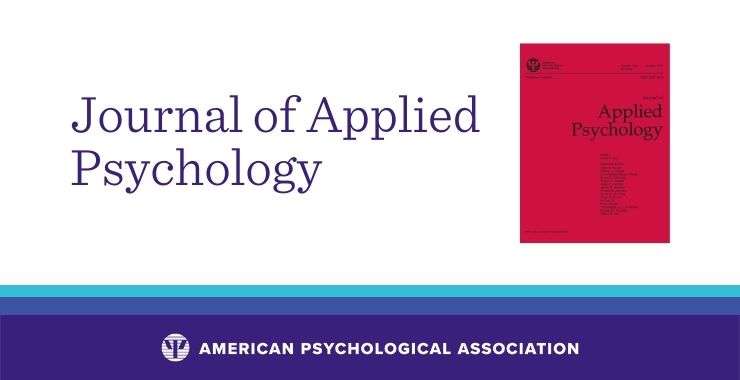
Journals in psychology, although most of them are not yet Open Access (optimistically speaking) as previous posts have indicated, function as working memory of scientific findings. They usually follow the idea of collecting and saving and commonly sharing findings that have been investigated qualitatively and quantitatively in the world and transmitting them worldwide and onto following generations. Although the idea of free access to most of the journals has not been fulfilled, journals nevertheless guide us through the quickly growing field of research. In order not to get too confused and overwhelmed by the mass of journals nowadays, this post intends to structure the journal world starting historically from the first and only journal in psychology established at the end of the 19th century.
The birth of the first psychological journal
The German professor Wilhelm Wundt (1832-1920) has been considered as one of the founders of psychology as a science in the way we look at it today. Wundt mounted a campaign to make psychology an independent discipline. In 1879, he succeeded in establishing the first formal laboratory for psychological research at university of Leipzig.
While forming psychology into a scientific discipline that could compete and educate in the same manner such as the more traditional disciplines like medicine and mathematics, Wundt established the first journal publishing research on psychology. This journal contained the first experimental findings of psychological experiments and subjects in order to share it with later generations.
This stepstone in psychological history has been set in 1789 and still has its enormous impact on the way we see psychology as a science today.
G. Stanley Hall (1846-1924) briefly studied with Wundt. Then towards the end of the 19th century, Hall reeled off a series of “firsts” for American psychology. He established America’s first research laboratory at Johns Hopkins University in 1883. In 1887, he launched America’s first psychology journal. Hall was the driving force behind the establishment of the American Psychological Association (APA) in 1892. He was also elected the first president of the APA. The organization was set up by him and 26 others. Today, there are over 155,000 members and affiliates devoted to the advancement of psychology.
An overview of the variety of psychological journals today
After the first scientific journal of psychology has been established, psychology started to spread over the world leading to a large increase in academic publications annually. Thus, throughout the course of 130 years, the below stated areas of journals have been established to collect and share scientific evidence (the synthesis does not contain all journals that exist in psychology at present).
Methods of reviewing process: Peer-reviewed
Many scholarly journals use a process of peer review prior to publishing an article, whereby other scholars in the author’s field or specialty critically assess a draft of the article. Peer-reviewed journals (also called refereed journals) are scholarly journals that only publish articles that have passed through this review process. The review process helps ensure that the published articles reflect solid scholarship in their fields.
The Journal of European Psychology Students and its review process reflects a good example of a peer- reviewed journal.
Scholarly journals contain articles written by, and addressed to, experts in a discipline. The main purpose of a scholarly journal is to report original research or experimentation and to communicate this information to the rest of the scholarly world. The language of scholarly journals reflects the discipline covered, as it assumes some knowledge or background on the part of the reader. Scholarly journals always rigorously cite their sources in the form of footnotes or bibliographies. Many scholarly journals are published by professional organizations.
While not all scholarly journals go through the peer-review process, it is usually safe to assume that a peer-reviewed journal is also scholarly.
As you have learned from this post, the world of academic psychology is enormous and if you succeed in publishing your research, you will contribute to the active working memory of psychological science.
If you decide to take your first step in the world of psychology journals, start with JEPS, your Journal of European Psychology Students. Our review process is twofold – on one side, the typical scholarly referring describe above. On the other, we try to make it an educational experience for budding future scientists, so you would learn the nooks and crannies of publishing your own paper in the best way possibly – by doing it.
References
Interesting links:
Each of the above stated journals reveals a link when scrolling over it.
http://journalseek.net/psyc.htm
__________________________________________________________________________________________
As being part of EFPSA’s JEPS team, Sina Scherer works as JEPS Bulletin’s editor and is currently enrolled in the last year of her Master programme in Work and Organizational Psychology at the Westfälische Wilhelmsuniversität Münster. Her fields of interest cover the areas of Intercultural Psychology, Personality and Organizational Psychology such as Health Psychology.

Sina Scherer
Sina Scherer, studying at University of Münster, Germany, and University of Padova, Italy. I have previously worked as JEPS Bulletin Editor and am active in a NMUN project simulating the political work of the United Nations as voluntary work. I am interested in cognitive neuroscience and intercultural psychology, anthropology and organizational psychology (aspects of work-life balance, expatriation).
More Posts
![]()
![]()
![]()
Share this:
The Journal of Psychology: Interdisciplinary and Applied is a bimonthly double-blind, peer-review psychology journal published by Taylor & Francis. The Journal of Psychology was founded in 1935[1] by Carl Murchison, an American psychologist, organizer, publisher, and editor. He co-founded The Journal of Genetic Psychology, The Journal of Social Psychology, and The Journal of General Psychology, among others. In 2009, Heldref sold the ownership of the titles to Taylor & Francis.[2]
The Journal of Psychology is an interdisciplinary journal that publishes empirical research and theoretical articles in applied areas of psychology including clinical, counseling, measurement/assessment, school, educational, industrial, and personnel psychology. In addition, the journal publishes interdisciplinary research that integrates psychology and other fields (e.g., psychology and law, psychology and consumer behavior, psychology and religion).
With the transfer of ownership, The Journal of Psychology is headquartered in Philadelphia.
Abstracting and indexing
[
edit
]
The Journal of Psychology is abstracted and indexed in PsycINFO, Scopus, and FRANCIS.[3]
References
[
edit
]
p = 0.011). Most of the professionals (80%) were concerned about a possible infection, and up to 96% were worried about infecting their family members. The most common COVID-19 symptom was a headache, with there being a higher incidence of this in women. Significant differences were observed with respect to the availability of appropriate PPE depending on the Spanish region (i.e., Cataluña had best rate of PPE availability) (p = 0.005). The higher incidence of myalgias and respiratory distress were associated with a lower availability of PPE and a higher patient/professional ratio. Conclusions: The ICU staff reported an increase in their workload, with an increase in the amount of staff who had less experience. A high percentage of them have suffered symptoms, although the proportion of positive tests was low. The most characteristic symptoms of COVID-19 seem to be related to the working conditions. The results show the socio-occupational and health conditions of Spanish ICU professionals during the pandemic and point to the need to establish occupational risk-prevention measures.
Objective: The aim of this research is to analyze the socio-occupational and health conditions of Intensive Care Units (ICU) health professionals during the COVID-19 pandemic in Spain. In addition, with regard to the working conditions (availability of personal protective equipment—PPE, workload and patient/professional ratio), this research aims to analyze the possible differences depending on the Spanish region that was sampled and their professional category, as well as their relationship with the characteristic symptoms of COVID-19 (myalgias and respiratory distress). Method: A cross-sectional study performed with an online questionnaire, which was spread throughout all of the Spanish autonomous communities/regions. Results: The sample consisted of 461 ICU professionals in Spain, of whom, 94% reported an increase in their workload, and 43% reported a patient/professional ratio that was higher than it usually is. The median professional experience in the ICU was 9.73 years, with 47% of them having less than 5 years of experience in it. About 80% had undergone some diagnostic tests. There is a significant difference in ‘Serology (+)’ in terms of sex, with males having a serology (+) in 26% of the cases and females having it in 13% of the cases (= 0.011). Most of the professionals (80%) were concerned about a possible infection, and up to 96% were worried about infecting their family members. The most common COVID-19 symptom was a headache, with there being a higher incidence of this in women. Significant differences were observed with respect to the availability of appropriate PPE depending on the Spanish region (i.e., Cataluña had best rate of PPE availability) (= 0.005). The higher incidence of myalgias and respiratory distress were associated with a lower availability of PPE and a higher patient/professional ratio. Conclusions: The ICU staff reported an increase in their workload, with an increase in the amount of staff who had less experience. A high percentage of them have suffered symptoms, although the proportion of positive tests was low. The most characteristic symptoms of COVID-19 seem to be related to the working conditions. The results show the socio-occupational and health conditions of Spanish ICU professionals during the pandemic and point to the need to establish occupational risk-prevention measures. Full article



